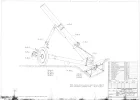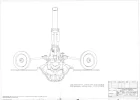Launch and attack flexibility, along with rapid-response time, were key elements contributing to the success of the attacks, Navy experts said.
"We were operating in international waters. Being forward-deployed on our platforms, Tomahawks provide an ability on short notice to give the national leadership options in accord with national policy," Capt. Paul Stader, Director, Plans and Policy, told Scout Warrior in an interview.
In a manner consistent with the attacks on Syrian airfields, Tomahawk missiles have a history of being used to destroy "fixed" target locations such as enemy bunkers, airfields, command and control systems and building locations. They are often the first weapon to attack and will likely remain so as they evolve into the future. Current state of the art Tomahawks, called Block IV, have some technical innovations making them even more effective.
Looking to the future, the Navy is also pursuing high-tech seeker upgrades to the submarine and ship-launched Tomahawk missile as a way to better enable the weapon to destroy moving enemy ships at sea, officials said.
"Tomahawk is a weapon we have evolved. It is not the same as it was 20-years ago and can really minimize collateral damage because of precision," Stader said.








 Ja tämäkin on vain väite
Ja tämäkin on vain väite



